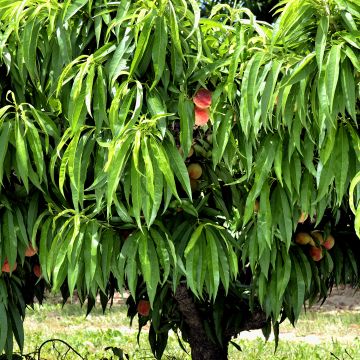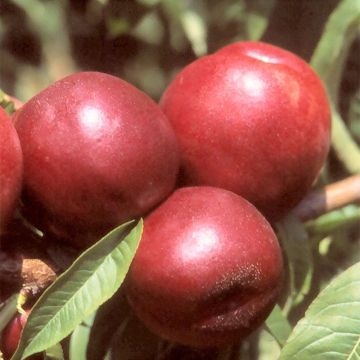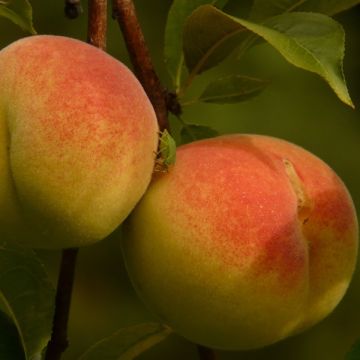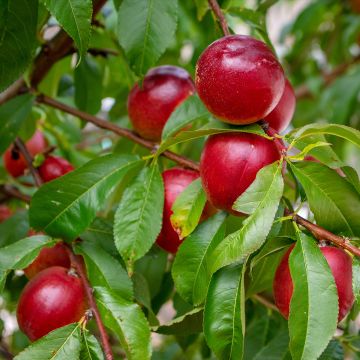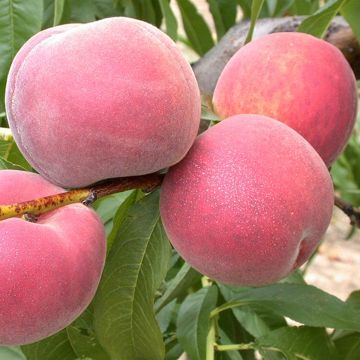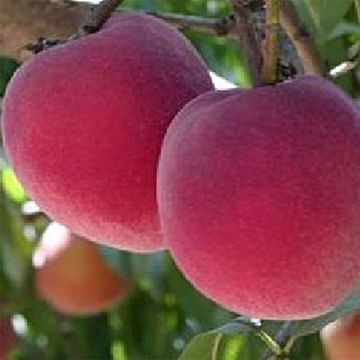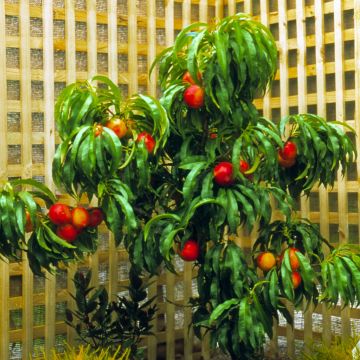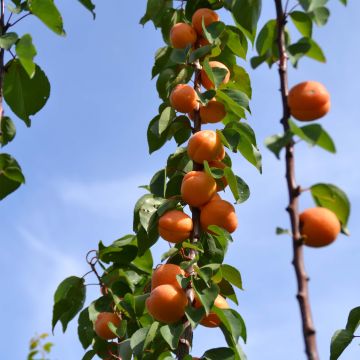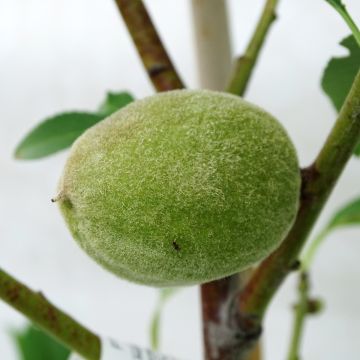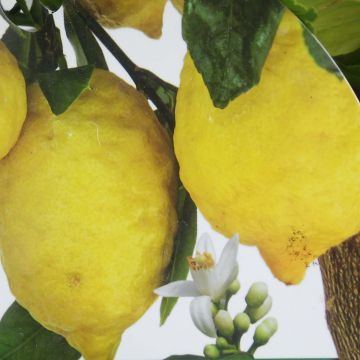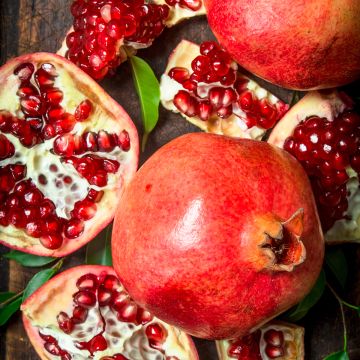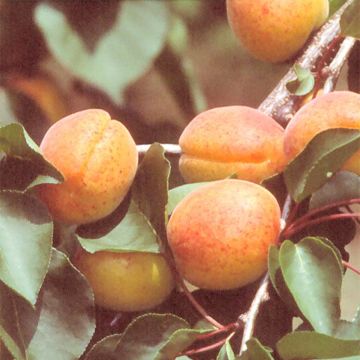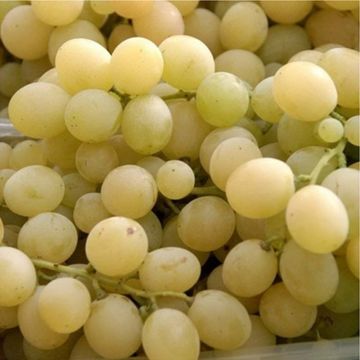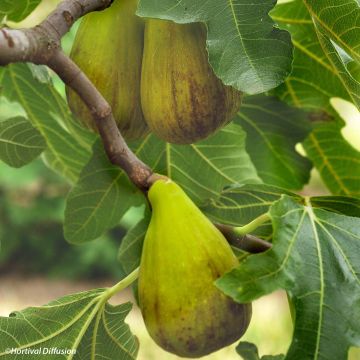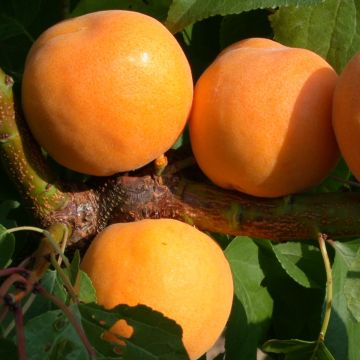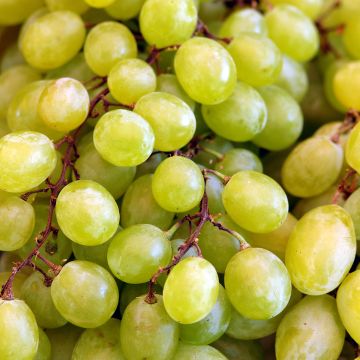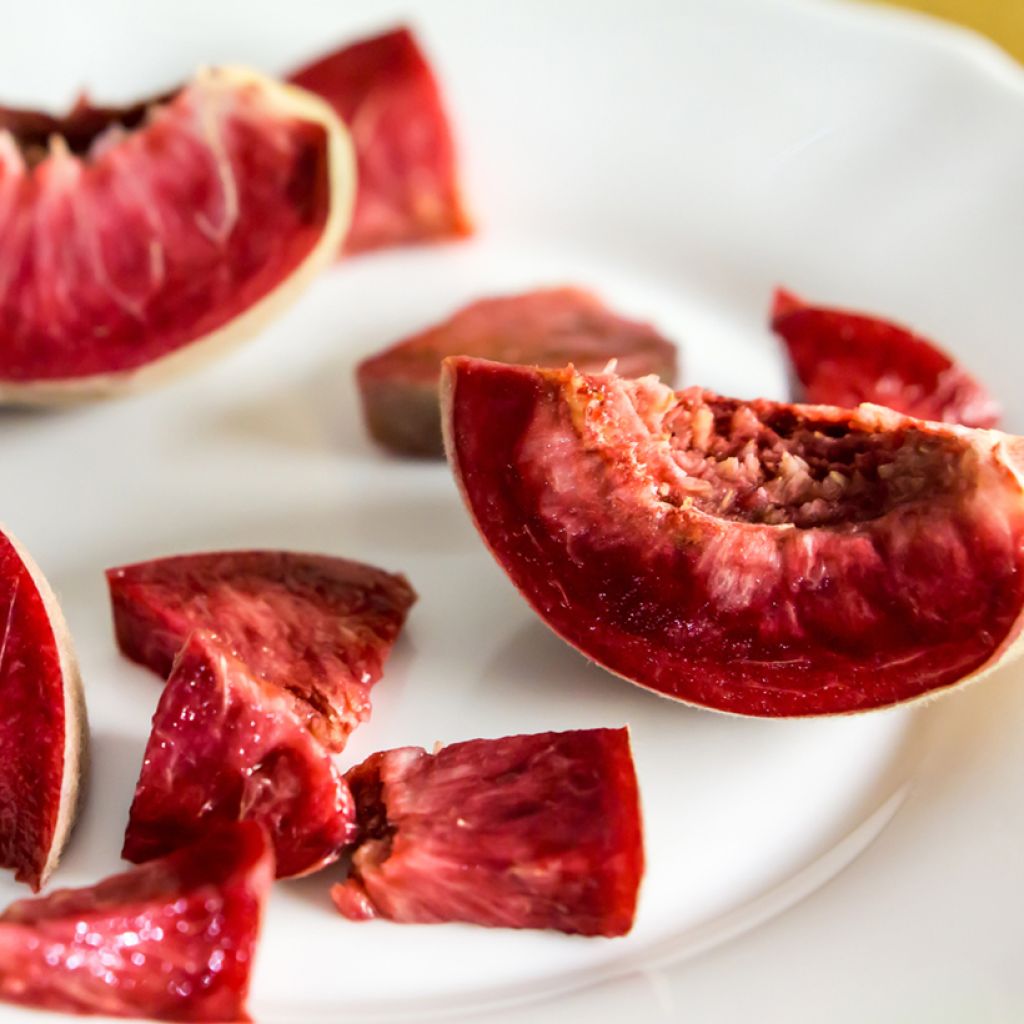

Pêcher Red Robin Bio
Prunus persica Red Robin - Organic Peach Tree
Prunus persica Red Robin
Peach, Peach tree
This item cannot be shipped to the selected country
Oversize package delivery charge from €6.90
Delivery to Corse prohibited
More information
Schedule delivery date,
and select date in basket
This plant carries a 6 months recovery warranty
More information
We guarantee the quality of our plants for a full growing cycle, and will replace at our expense any plant that fails to recover under normal climatic and planting conditions.
Oversize package: home delivery by special carrier from €6.90 per order..
Express home delivery from €8.90.
Delivery to Corse prohibited: UE law prohibits the import of this plant from mainland France to Corse as part of the fight against Xylella fastidiosa. Please accept our sincere apologies.
More information
Description
The 'Red Robin' Peach Tree, from Organic Agriculture, is an old variety that produces small to medium-sized peaches, measuring 6 to 7 centimeters (2 to 3 inches) in diameter and weighing between 110 and 130 grams. The peaches are round, slightly flattened at the top, and may have a crease. The skin is slightly fuzzy and bright red, while the flesh is white with red veins and has a sweet flavour with a hint of acidity when fully ripe. The stone separates easily from the flesh. This variety bears fruit quickly and the harvest can vary in abundance from year to year, sometimes showing an alternating pattern, allowing the tree to replenish its reserves. It is sensitive to spring frosts and prefers a warm, sunny, and protected location.
Prunus persica (Common Peach) is a fruit tree belonging to the Rosaceae family, originating from China in the Sichuan and Guizhou regions around 500 BCE. It was introduced to Europe in the 6th century and experienced significant development in the 19th century. Many selections aimed at improving the fruit's taste were made during this time.
The 'Red Robin' variety was obtained in 1941 by W.E. Lammerts in Ontario, California, United States. It is a crossbreed between the 'Babcock' and 'MayFlower' varieties. This peach tree forms a small tree with a fairly upright structure, reaching a height of 3 to 4 metres (10 to 13 feet) and a diameter of approximately 2 to 3 metres (7 to 10 feet). Its habit is well-suited to low forms (like a goblet) or espaliers. The foliage consists of lanceolate leaves measuring 8 to 15cm (3 to 6in) in length and 3 to 4cm (1 to 2in) in width, with serrated and wavy edges, a vibrant green colour, and yellow-orange autumn hues before falling. The leaves have a slight almond fragrance. In late April, the pink flowers, measuring 2 to 3cm (1in) in diameter, appear solitarily before the leaves on the previous year's branches. They can be destroyed by frost at temperatures below -2 to -3°C. It has a remarkably decorative spring flowering and is particularly attractive to bees and butterflies. It is a hardy tree, tolerating temperatures down to -10°C, but is susceptible to late spring frosts, which can damage its flowers and affect fruiting. It is a self-fertile variety, not requiring other peach trees nearby for pollination, although the presence of another peach tree can improve fertility. Fruit harvest begins in late June and continues until mid-July as they ripen.
Peaches are very delicate and should be harvested by hand with care. The fruits can be consumed immediately after harvest. Delicious and flavourful, peaches can be enjoyed as they are. They are ideal for making compotes, ice cream, sorbets, pies, pastries, fruit salads, and as accompaniments to savoury dishes such as duck, rabbit, chicken, and fish (salmon, cod, etc.). They are also perfect for making juices and syrups. Peaches are refreshing and hydrating due to their high water content. They are also filling and low in calories, while being rich in potassium, magnesium, phosphorus, and iron. They contain vitamins C and B, antioxidants, and fibre, making them a healthy choice. They are invigorating, energizing, and rehydrating. The fruits can be stored for up to a week in a cool place, away from light.
Like many fruit trees, peach trees prefer rich, deep, and well-drained soils. They do not tolerate excess water, heavy and compacted soils, or limestone soils. They prefer a sunny location sheltered from drafts and cold winds. A southeast or southwest exposure is ideal. In regions with frequent late spring frosts, peach trees can be trained against a south-facing wall. Popular for their fruits, peach trees find their rightful place in the garden, bringing joy to both young and old. With a wide range of varieties to choose from, it is easy to find one that suits your needs.
Report an error about the product description
Prunus persica Red Robin - Organic Peach Tree in pictures
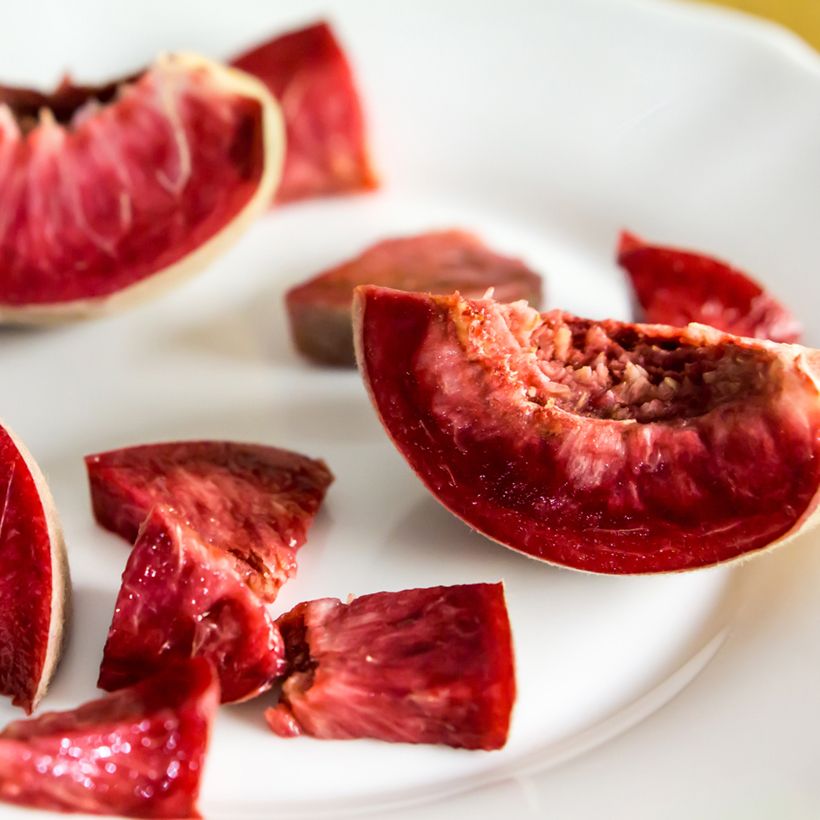

Plant habit
Fruit
Flowering
Foliage
Botanical data
Prunus
persica
Red Robin
Rosaceae
Peach, Peach tree
Cultivar or hybrid
Other Peach and Nectarine trees
Planting and care
The Organic 'Red Robin' Peach should be planted in full sun, protected from drafts and cold winds. A southeast or southwest exposure is ideal. If you don't live in the south of France, the peach tree can be trained against a south-facing wall. In regions that frequently experience late spring frosts, it will be more difficult, or even impossible, to fruit a peach tree.
It requires ordinary soil in a rich, deep, and well-drained soil. The peach tree dislikes heavy, waterlogged soils, as well as limestone soils.
The planting period depends on the form of the peach tree. Therefore, a bare-root peach tree should be planted from October to March, traditionally for Saint Catherine's Day, excluding frost periods. A bare-root fruit tree should be planted immediately after purchase, as the roots should not be exposed to sunlight and open air. If you cannot plant it immediately, keep it heeled in until then.
When purchased in a container, the peach tree can be planted in autumn, from October to December, again excluding frost periods or even in spring.
Dig a hole at least 60cm (24in) deep and 1 metre (3 feet) wide, at least one week before planting. Remove all stones and adventives. Place the container in a basin to moisten the root ball by capillarity. Add two handfuls of crushed horn to the bottom of the hole. Mix the extracted soil with well-rotted compost, well-decomposed manure, or potting soil. Fill the hole halfway with the extracted soil. Plant a stake at least 50cm (20in) deep. Place the peach tree in the hole. Fill with the remaining soil. Gently firm the soil around the peach tree and tie it to the stake. Form a basin and water abundantly.
Follow the same steps if you are planting a bare-root peach tree. But don't forget to dress and prune the bare roots before planting.
Planting period
Intended location
Care
This item has not been reviewed yet - be the first to leave a review about it.
Mediterranean fruit trees
Haven't found what you were looking for?
Hardiness is the lowest winter temperature a plant can endure without suffering serious damage or even dying. However, hardiness is affected by location (a sheltered area, such as a patio), protection (winter cover) and soil type (hardiness is improved by well-drained soil).

Photo Sharing Terms & Conditions
In order to encourage gardeners to interact and share their experiences, Promesse de fleurs offers various media enabling content to be uploaded onto its Site - in particular via the ‘Photo sharing’ module.
The User agrees to refrain from:
- Posting any content that is illegal, prejudicial, insulting, racist, inciteful to hatred, revisionist, contrary to public decency, that infringes on privacy or on the privacy rights of third parties, in particular the publicity rights of persons and goods, intellectual property rights, or the right to privacy.
- Submitting content on behalf of a third party;
- Impersonate the identity of a third party and/or publish any personal information about a third party;
In general, the User undertakes to refrain from any unethical behaviour.
All Content (in particular text, comments, files, images, photos, videos, creative works, etc.), which may be subject to property or intellectual property rights, image or other private rights, shall remain the property of the User, subject to the limited rights granted by the terms of the licence granted by Promesse de fleurs as stated below. Users are at liberty to publish or not to publish such Content on the Site, notably via the ‘Photo Sharing’ facility, and accept that this Content shall be made public and freely accessible, notably on the Internet.
Users further acknowledge, undertake to have ,and guarantee that they hold all necessary rights and permissions to publish such material on the Site, in particular with regard to the legislation in force pertaining to any privacy, property, intellectual property, image, or contractual rights, or rights of any other nature. By publishing such Content on the Site, Users acknowledge accepting full liability as publishers of the Content within the meaning of the law, and grant Promesse de fleurs, free of charge, an inclusive, worldwide licence for the said Content for the entire duration of its publication, including all reproduction, representation, up/downloading, displaying, performing, transmission, and storage rights.
Users also grant permission for their name to be linked to the Content and accept that this link may not always be made available.
By engaging in posting material, Users consent to their Content becoming automatically accessible on the Internet, in particular on other sites and/or blogs and/or web pages of the Promesse de fleurs site, including in particular social pages and the Promesse de fleurs catalogue.
Users may secure the removal of entrusted content free of charge by issuing a simple request via our contact form.
The flowering period indicated on our website applies to countries and regions located in USDA zone 8 (France, the United Kingdom, Ireland, the Netherlands, etc.)
It will vary according to where you live:
- In zones 9 to 10 (Italy, Spain, Greece, etc.), flowering will occur about 2 to 4 weeks earlier.
- In zones 6 to 7 (Germany, Poland, Slovenia, and lower mountainous regions), flowering will be delayed by 2 to 3 weeks.
- In zone 5 (Central Europe, Scandinavia), blooming will be delayed by 3 to 5 weeks.
In temperate climates, pruning of spring-flowering shrubs (forsythia, spireas, etc.) should be done just after flowering.
Pruning of summer-flowering shrubs (Indian Lilac, Perovskia, etc.) can be done in winter or spring.
In cold regions as well as with frost-sensitive plants, avoid pruning too early when severe frosts may still occur.
The planting period indicated on our website applies to countries and regions located in USDA zone 8 (France, United Kingdom, Ireland, Netherlands).
It will vary according to where you live:
- In Mediterranean zones (Marseille, Madrid, Milan, etc.), autumn and winter are the best planting periods.
- In continental zones (Strasbourg, Munich, Vienna, etc.), delay planting by 2 to 3 weeks in spring and bring it forward by 2 to 4 weeks in autumn.
- In mountainous regions (the Alps, Pyrenees, Carpathians, etc.), it is best to plant in late spring (May-June) or late summer (August-September).
The harvesting period indicated on our website applies to countries and regions in USDA zone 8 (France, England, Ireland, the Netherlands).
In colder areas (Scandinavia, Poland, Austria...) fruit and vegetable harvests are likely to be delayed by 3-4 weeks.
In warmer areas (Italy, Spain, Greece, etc.), harvesting will probably take place earlier, depending on weather conditions.
The sowing periods indicated on our website apply to countries and regions within USDA Zone 8 (France, UK, Ireland, Netherlands).
In colder areas (Scandinavia, Poland, Austria...), delay any outdoor sowing by 3-4 weeks, or sow under glass.
In warmer climes (Italy, Spain, Greece, etc.), bring outdoor sowing forward by a few weeks.





































